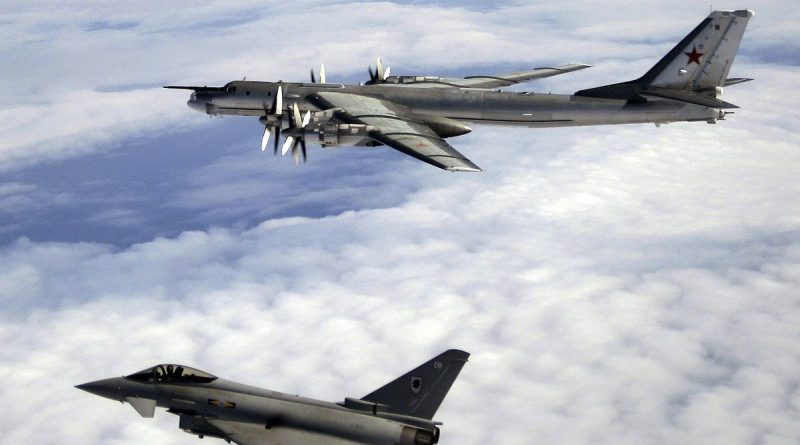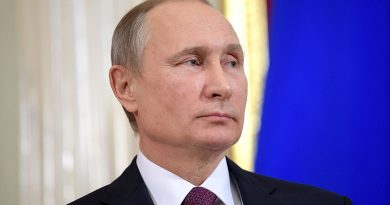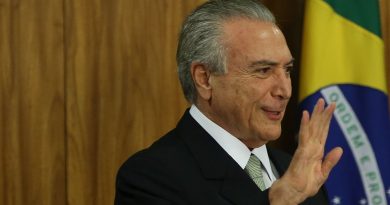Thousands of NATO Troops to be Deployed to Russian Border
Not since the Cold War has the North Atlantic Treaty Organization (NATO) prepared such a large military build-up as a response to Russia. Although the 28-nation alliance had already decided to deploy troops in North-Eastern Europe following last July’s Summit in Warsaw, recent developments have led to an escalation of the West-East tensions. This pledge follows a NATO defense Ministers meeting taking place in Brussels (October 26-27).
NATO stands together
This Wednesday, October 26, Britain has declared that it will send fighter jets to Romania, to patrol around the Black Sea, partly to support Turkey. They will also deploy troops to Estonia, backed by France and Denmark. The US, on the other hand, will commit soldiers to Poland in addition to a separate force with tanks and other heavy equipment to be put in motion across Eastern Europe.
Canada will send 450 soldiers to Latvia, which will be joined by 140 military forces from Italy. In turn, German stated it will deploy between 400 and 600 troops to Lithuania, which will be backed by Dutch, Norwegian, Belgian, Croatian, and Luxembourger troops.
These contributions will be part of a new 4,000-strong force distributed in four battle groups and deployed in early 2017, supported by a 40,000 men rapid-reaction force, along with other follow-on forces, if deemed necessary. Russian forces stationed across its Western flank are estimated to be comprised of 330,000 soldiers.
Russia’s response
On the same day (October 26), the Swedish military reported that two warships equipped with long-range cruise missiles have been added to Russia’s Baltiysk base in Kaliningrad. This region shares a land border with Poland and Lithuania, and this incident has already caused significant dismay. Known as ‘Sizzlers’, those weapons have a range of approximately 1500 km, can be armed with nuclear warheads, and are capable of hitting targets across Poland and the Baltics.
Throughout this month, Russia had already deployed short-range (500 km) Iskander missiles to Kaliningrad, also nuclear-capable, activities that have been followed closely by the Alliance’s navies.
In October 25, Russia released the first image of ‘Satan 2’, its new nuclear missile. Reported in May as having the capacity to destroy areas the size of Texas or France, this weapon is estimated to be approximately 2,000 times more powerful than the bombs dropped in Hiroshima and Nagasaki, and its range exceeds 11,000 km, enough to reach both South and North poles. By means of not moving in a defined trajectory, Satan 2 is described by Russian government’s news outlet ‘Sputnik’ as being impossible to intercept.
NATO Secretary-General Jens Stoltenberg also accused Russia of continually supporting rebel groups in Ukraine following the Annexation of the Crimean Peninsula in 2014, and of suspending an agreement made with the US, in June 2000, to reduce their surplus weapons-grade plutonium.
New Russian capabilities
Recently, Russia has shown to be improving its aircraft, missiles, and the training of its troops, as well as newly developed ability to deploy simultaneously in multiple locations. This has already been demonstrated in Syria and in the military exercises taking place on NATO’s borders, in a clear display of force.
On October 26, Moscow has also withdrawn a request to refuel three warships, bound for Syria, in the Spanish city of Ceuta. NATO has expressed concerns over the possibility of attacks on civilians in war-ravaged Aleppo. However, Russia’s only aircraft carrier – Admiral Kuznetsov -, a flotilla described as more of a propaganda tool than a game-changer, continues its sail towards the Eastern Mediterranean.
A New Cold War?
In declarations in Sochi (October 27), Russian President Vladimir Putin has described as ‘stupid and unrealistic’ the idea that Russia might attack other European countries. NATO’s Secretary-General, Jens Stoltenberg, on the other hand, accused Russia of nuclear intimidation, and explained that the Alliance is merely reacting to the country’s activities in Ukraine. Mr. Stoltenberg insisted, however, that NATO does not consider Russia to be an imminent threat, and expressed his hopes for a “more co-operative and constructive relationship”, since NATO does not want another Cold War.
British fighter jet escorting a Russian aircraft over the North Atlantic Ocean, Photo by British Ministry of Defence / OGL
![]() This work is licensed under a Creative Commons Attribution-NonCommercial-ShareAlike 4.0 International License.
This work is licensed under a Creative Commons Attribution-NonCommercial-ShareAlike 4.0 International License.




